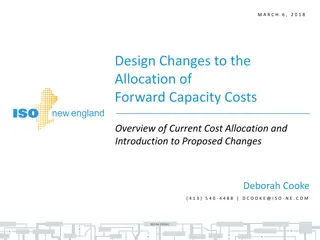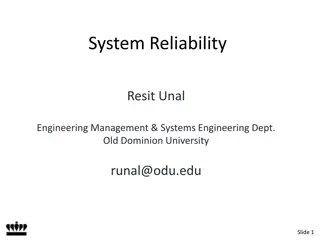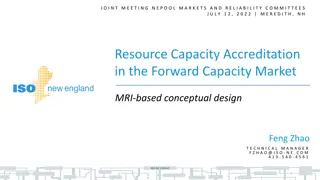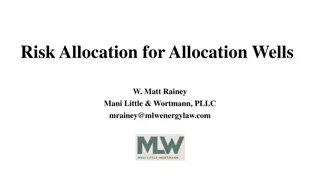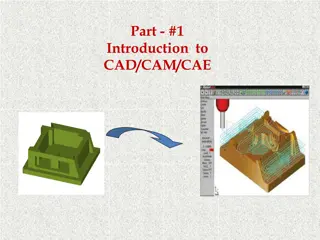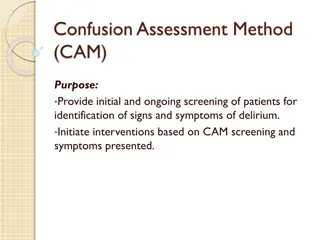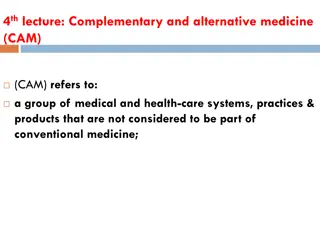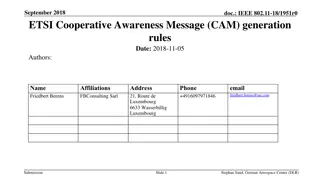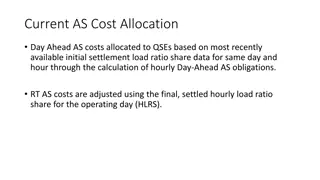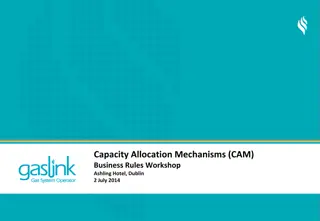Refinements to CAM-Related Reliability Cost and Capacity Allocation Processes
CAM-related reliability cost and capacity allocation processes are examined in this presentation, outlining the need for reform and addressing issues faced by non-utility Load Serving Entities (LSEs) and Community Choice Aggregators (CCAs).
Download Presentation

Please find below an Image/Link to download the presentation.
The content on the website is provided AS IS for your information and personal use only. It may not be sold, licensed, or shared on other websites without obtaining consent from the author.If you encounter any issues during the download, it is possible that the publisher has removed the file from their server.
You are allowed to download the files provided on this website for personal or commercial use, subject to the condition that they are used lawfully. All files are the property of their respective owners.
The content on the website is provided AS IS for your information and personal use only. It may not be sold, licensed, or shared on other websites without obtaining consent from the author.
E N D
Presentation Transcript
Refinements to CAM-Related Reliability Cost and Capacity Allocation Processes Jeremy Waen Regulatory Analyst| Marin Clean Energy February 2015
Presentation Overview 1. The Cost Allocation Mechanism (CAM) needs to be reformed, entirely needs to be reformed, entirely 1. The Cost Allocation Mechanism (CAM) 2. Until it is reformed, the allocation process by which CAM-related reliability cost and capacity is passed through to non-utility Load Serving Entities (LSEs) should be improved should be improved 2. Until CAM is reformed, the allocation process by which CAM-related reliability cost and capacity is passed through to non-utility Load Serving Entities (LSEs) 3. Possible interim modifications to the CAM- related allocation process related allocation process 3. Possible interim modifications to the CAM- 4. Additional reform for CAM is still necessary 4. Additional reform for CAM is still necessary 2
1. CAM Needs Reform What CAM presently means for CCAs: 1. The IOU can purchase resources for itself and CCAs, and interfering with CCA procurement autonomy 2. Both the costs of capacity and reliability due to the IOU s procurement are imposed on CCA customers, along with an share of the capacity due to the procurement 3. These allocations shift unpredictably over time, create market inefficiencies and strand capacity costs for CCA customers 3
1. CAM Needs Reform Why is this a problem? 1. By law, CCAs have procurement autonomy 2. CCAs cannot control the cost or resource type due to the unpredictability of CAM 3. CCAs procure in advance for their customer load, so discrepancies in CAM allocations force the CCA to over-procure capacity and sell excess, usually at a loss 4. CAM does not account for the increased reliability due to CCA procurement 5. CAM is growing rapidly 4
1. CAM Needs Reform CCA Procurement Autonomy: P.U. Code Section 366.2(a)(5) CCAs shall be solely responsible for all generation procurement activities on behalf of its customers, except as expressly authorized by statute. P.U. Code Section 380(b)(4) In establishing resource adequacy requirements, the commission shall maximize the ability of community choice aggregators to determine the generation resources used to serve their customers. 5
1. CAM Needs Reform CAM Is Growing! CAM as % of MCE Total RA Requirement 3.7% 13.3% January 2013 January 2014 6
2. CAM Allocations Need Reform Why is this a problem? Why is this a problem? 1. By law, CCAs have procurement autonomy 2. CCAs cannot control the cost or resource type due to the unpredictability of CAM 3. CCAs procure in advance for their customer load, so discrepancies in CAM allocations force the CCA to over-procure capacity and sell excess, usually at a loss 4. CAM does not account for the increased reliability due to CCA procurement 5. CAM is growing rapidly 5. CAM is growing rapidly 1. By law, CCAs have procurement autonomy 2. CCAs cannot control the cost or resource type due to the unpredictability of CAM 3. CCAs procure in advance for their customer load, so discrepancies in CAM allocations force the CCA to over-procure capacity and sell excess, usually at a loss 4. CAM does not account for the increased reliability due to CCA procurement 7
2. CAM Allocations Need Reform Actual CAM Allocations do not match projections Source MCE s Comments on Refinement to 2016-17 RA, filed on January 16, 2105. 8
2. CAM Allocations Need Reform Actual CAM Allocations do not match projections Source MCE s Comments on Refinement to 2016-17 RA, filed on January 16, 2105. 9
3. Possible Interim Modifications to CAM Solution 1: Unbundling Steps Required: 1. Unbundle CAM net capacity costs into reliability and capacity costs 2. Pass-through reliability costs to all LSEs 3. Retain capacity costs and values with the procuring utility to meet the its Resource Adequacy requirements 10
3. Possible Interim Modifications to CAM Solution 1: Unbundling Capacity RA Cost (based on benchmark TBD) CAM Net Capacity Cost = RA Cost + Reliability Cost Reliability Net Capacity Cost RA Cost 11
3. Possible Interim Modifications to CAM Solution 1: Unbundling Capacity RA Cost (based on benchmark TBD) Costs Paid by IOU s bundled customers Costs Paid by all ratepayers in IOU s service territory Reliability Net Capacity Cost RA Cost 12
3. Possible Interim Modifications to CAM Solution 1: Unbundling What this means for CCAs: 1. Solves CCA procurement autonomy issue 2. Reduces uncontrollable cost exposure for CCAs from reliability and capacity costs to just reliability costs 3. Allows CCA to efficiently procure capacity to meet RA obligations 13
3. Possible Interim Modifications to CAM Solution 1: Unbundling What this means for others: 1. Allows the utility - the entity with resource specific knowledge - to keep the capacity 2. Allows all LSEs to efficiently procure capacity to meet RA obligations 3. Simplifies Energy Division s role by eliminating the CAM capacity pass- through allocation process 4. Differentiates capacity and reliability needs 14
3. Possible Interim Modifications to CAM Solution 1: Unbundling The Devil in the Details: What is the appropriate RA Cost by which the Reliability Cost will be determined? Should RA Cost be tied to the RA adder used in PCIA methodology? Should RA Cost be tied to some other factor or metric for capacity value? Reliability Cost = Net Capacity Cost - RA Cost 15
3. Possible Interim Modifications to CAM Other Solutions: Eliminate the variability of CAM allocations: To eliminate discrepancies between September and monthly CAM allocations Weight monthly CAM allocations: To make projected and actual CAM allocations proportionate with seasonal capacity requirements Other possibilities? 16
3. Possible Interim Modifications to CAM Other Solutions: Source MCE s Comments on Refinement to 2016-17 RA, filed on January 16, 2105. 17
4. Additional Reform Still Needed Why is this a problem? Why is this a problem? 1. By law, CCAs have procurement autonomy 2. CCAs cannot control the cost or resource type due to the unpredictability of CAM 3. CCAs procure in advance for their customer load, so discrepancies in CAM allocations force the CCA to over-procure capacity and sell excess, usually at a loss 4. CAM does not account for the increased reliability due to CCA procurement 5. CAM is growing rapidly 5. CAM is growing rapidly 1. By law, CCAs have procurement autonomy 2. CCAs cannot control the cost or resource type due to the unpredictability of CAM 3. CCAs procure in advance for their customer load, so discrepancies in CAM allocations force the CCA to over-procure capacity and sell excess, usually at a loss 4. CAM does not account for the increased reliability due to CCA procurement 18
4. Additional Reform Still Needed What steps remain to reform CAM entirely? 1. CPUC needs to clearly define what a local and system area reliability need is 2. All LSEs reliability procurement should be considered when determining overall reliability need 3. A mechanism for CCAs to self-procure reliability and opt-out of IOU procured reliability is needed 19
Thank You Questions? 20




